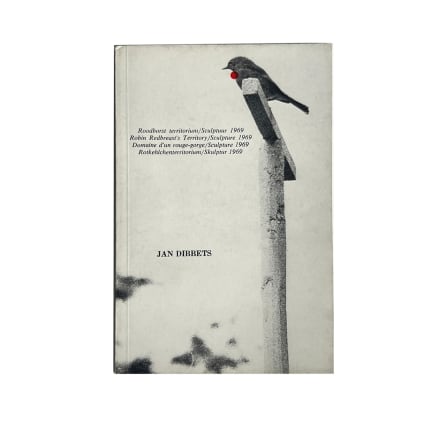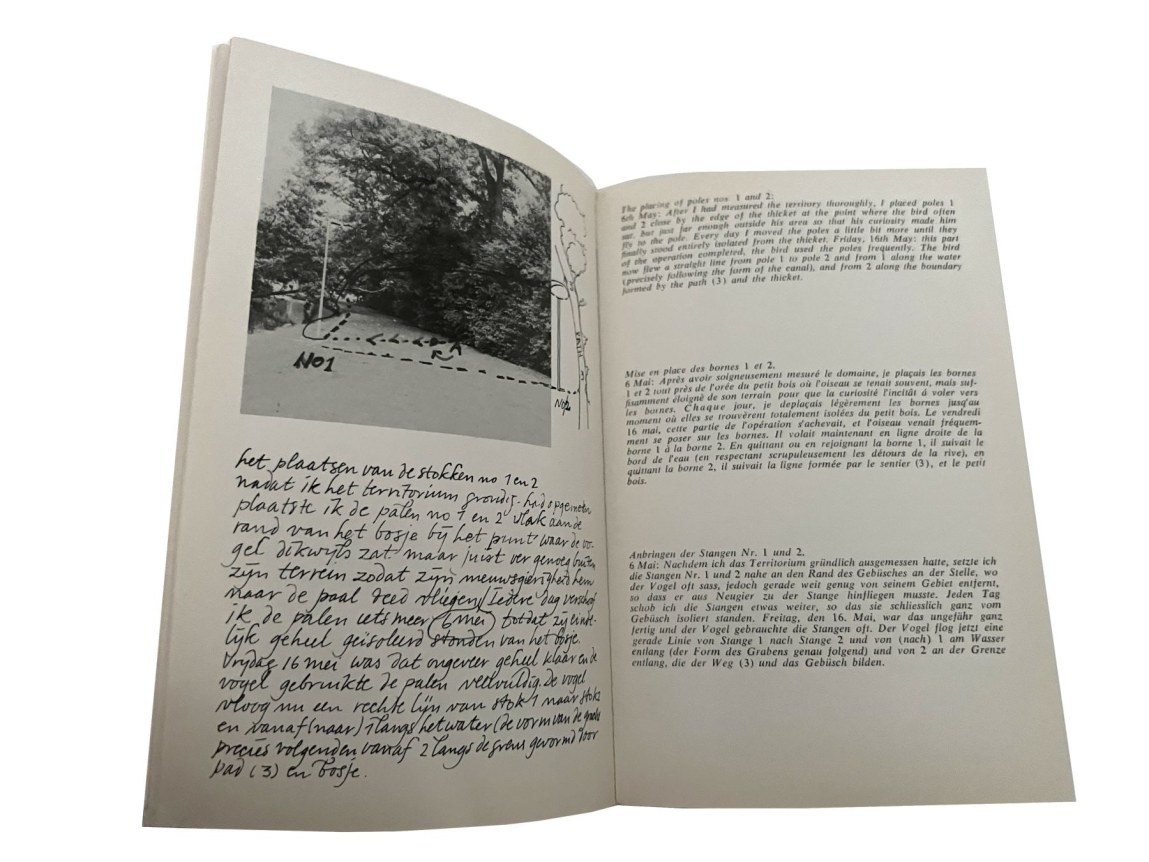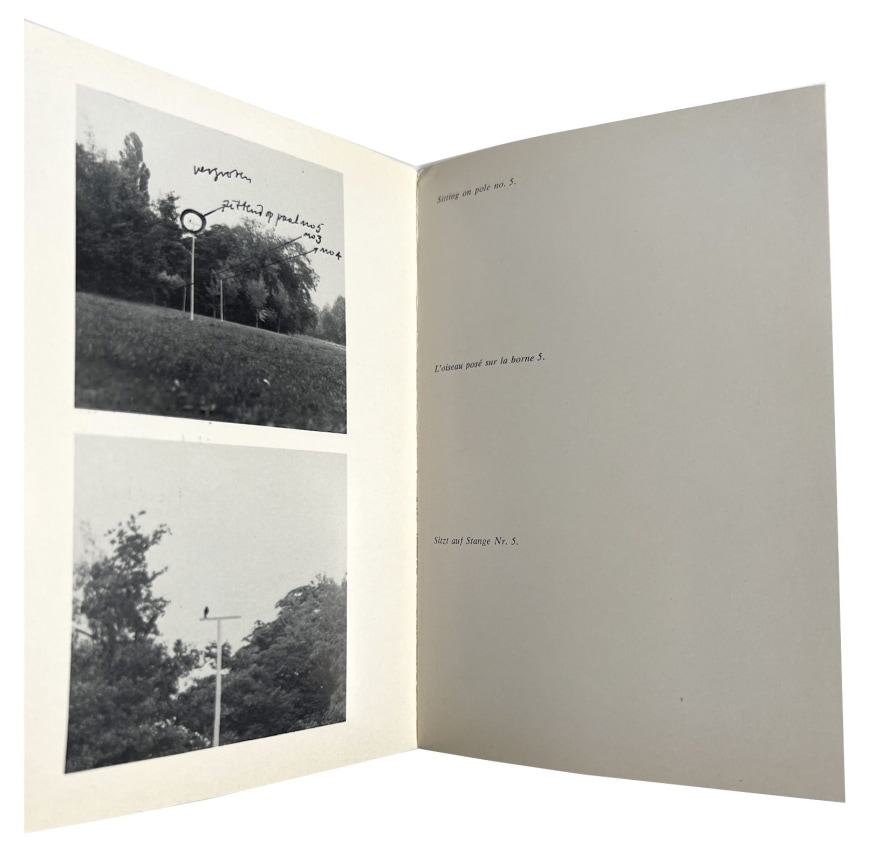1970
Artist book.
Pictorial wraps, offset-printed, black and white, 32 pp. First edition. The left pages of the book feature photographs and topographical surveys, alongside handwritten notes by the artist, rendered in English, Dutch, French and German on the right-hand pages.
Koln, New York: Walther König and Seth Siegelaub.
7 1/4h x 4 3/4w in (18.42h x 12.07w cm)
$ 200.00
Inquire



